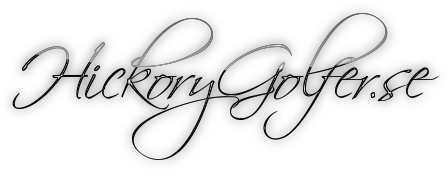|
 |
 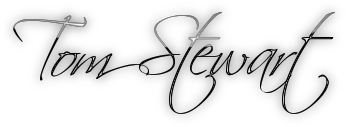
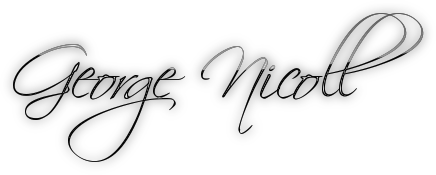  |
| |
|
Blandade klubbor |
|
|
|
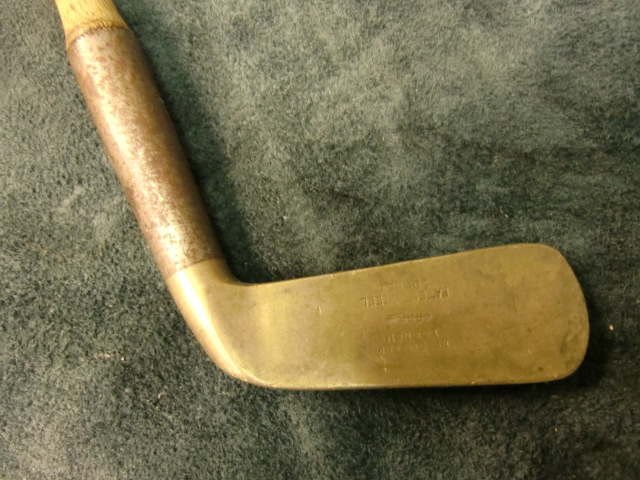 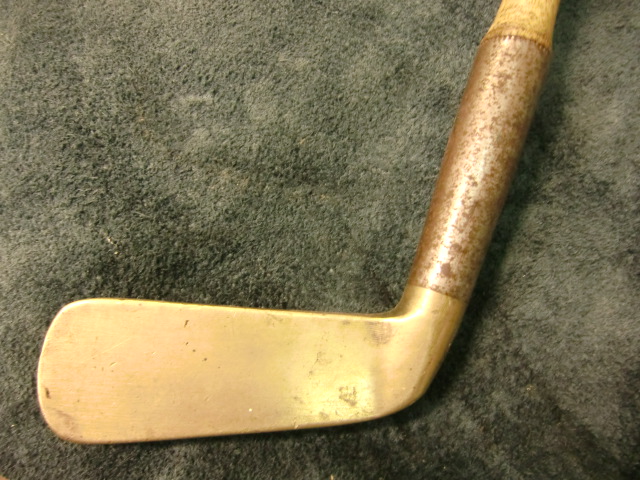
 |
|
Beskrivning
|
Loft
|
Längd
|
Svingvikt |
Stämpel
|
|
Putter |
5° |
Kort |
|
Bussey |
|
Övrig
information |
Bussey & Co.
They were suppliers of sporting goods
based in London are began producing golf
clubs during the late 1880’s. Their
cleek mark was the monogram GGB with an
arrow running through it. They only
manufactured clubs for a few years
during the 1890’s before acting as
agents for club makers until the early
1920’s so their own clubs are much
sought after.
London, England, 19th century Bussey
putter with brass head and steel socket
Stamped "Bussey & Co. / London / Patent
Steel Socket" together with an arrow and
initial cleekmark Hickory shaft and
patent Bussey sewn sheepskin grip
terminating with a leather covered butt
Together with a smooth-faced iron made
from two pieces of steel for the blade
and socket Stamped "Bussey & Co. /
London / Thistle / Patent Steel Socket"
Hickory shaft is fitted with a Bussey
patent-stitched sheepskin grip, stamped
"Geo. G. Bussey & Co. / Patent
Perfection Hand" The iron in overall
excellent condition with only minor
marks to bottom of blade, grip in
excellent condition. Putter in overall
excellent condition with little evidence
of use or wear, minor damage to grip.
|
|
 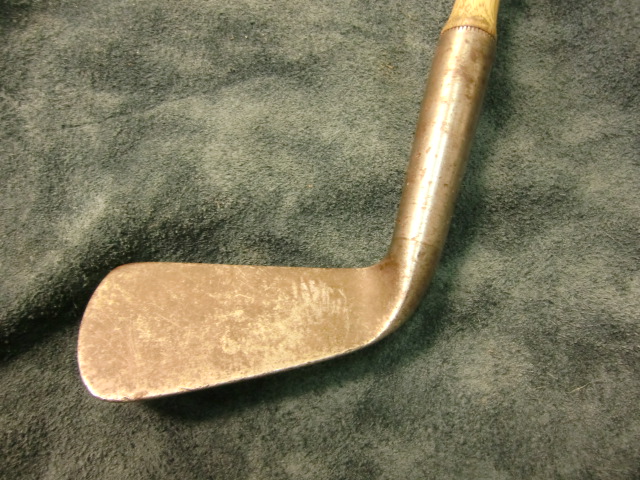
 |
|
Beskrivning
|
Loft
|
Längd
|
Svingvikt |
Stämpel
|
|
Iron |
23° |
Lång |
|
Bussey |
|
Övrig
information |
Steel Socket Iron ca 1890 i fantastiskt
skick med originalgrepp.
|
|
 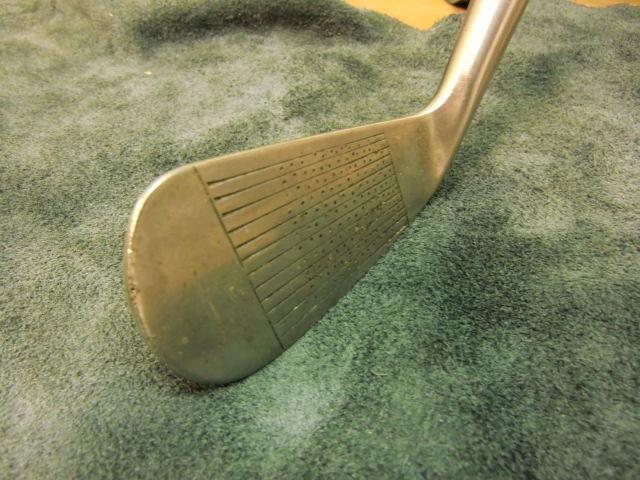 |
|
Beskrivning
|
Loft
|
Längd
|
Svingvikt |
Stämpel
|
|
1-Iron |
15° |
39" |
|
Cochrane (Bow-line
knot) Percy Roberts |
|
Övrig
information |
Ryder Cup (Percy Roberts)
In 1933 Southport & Ainsdale was
chosen to host the Ryder Cup match -
Great Britain versus America. Having
staged the Dunlop - Southport Tournament
in 1931 and 1933, the Ryder Cup
Committee of the Southport & Ainsdale
Golf Club were not without experience of
large golfing events. 250 stewards armed
with long canes with a red flag on top
were ready to marshall the crowds, white
lines around each green indicated just
where the limit was for the spectators
to stand, and the Official Programme
contained an impressive list of "dont's"
to guide all those watching who were not
golfers.
Whilst the course itself was in good
shape and would provide a more than
adiquate test for the 20 best golfers in
Britain and America, the club house and
it's facilities, whilst attractive,
could only be described as modest.
Captain A.N. Openshaw was the very
able secretary at the time, whilst the
professional was Percy Roberts who was
in his 24th year at the club, and would
soon be granted Honorary Life Membership
in recognition of his hard work during
the Ryder Cup match, where he acted as
starter, no microphone of course! Just a
good loud voice had to suffice. The club
Chairman, Mr. T.H.Thomas, and the
Captain, Mr Paul Carter, played
commanding roles in all that went on to
ensure the success of the 1933 Ryder Cup
match.
The respective captains J.H. Taylor
and Walter Hagen shake hands beside the
practice putting green. Samuel Ryder
supervises.
|
J P Cochrane
Edinburgh
Began around 1895 as a golfball producer
and, although some prduction of clubs
took place, this was not a serious
element of the business until about
1910. They became one of Scotland's
major exporters of clubs to the Empire
and the United States.
Famed for their giant niblicks in the
1920s (some more than 4" x 3") and the
patented Everlasting bulger driver which
used a combination wood/metal head,
their clubs can be recognised by a
knight cleek mark from 1910 onwards and
a loose knot (described by authorities
variously as a bowline or a reef knot
but not quite either) in the 1920s. They
are also one of the manufacturers where
you may find an inspection mark on their
irons: a small, personal mark made by an
inspector doing quality assurance within
the factory.
Det skulle vara roligt att utreda
släktskapet mellan Percy och bröderna
Ted och George Roberts. George som
började som pro på Stockholms GK som
sedan flyttade till Göteborg, hans
tjänst på Stockholms GK togs sedan över
av hans bror Ted "Edwin" Roberts.
Denna klubba har en historia i Stockholm
och har troligtvis sålts av Ted till sin
första ägare. Ted och Percy har
identiska stämplar så jag tvivlar inte
på att de är nära släkt.
|
|
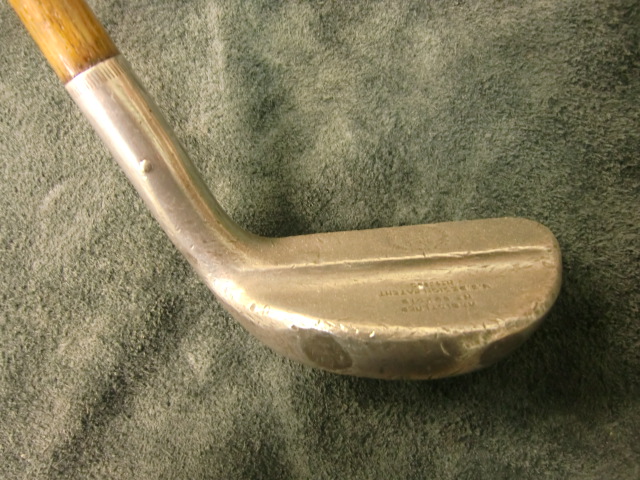 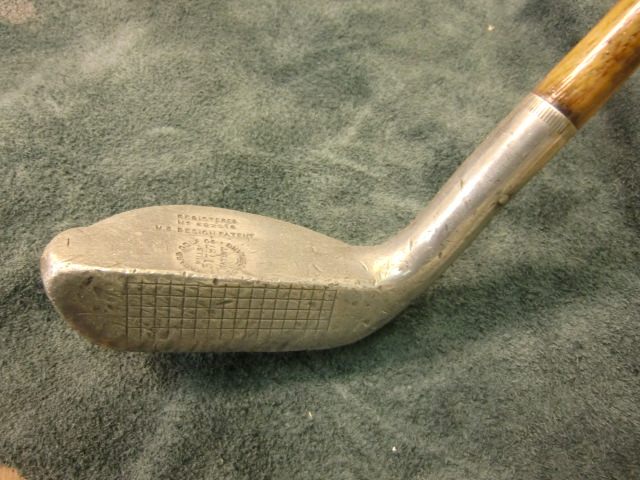 |
|
Beskrivning
|
Loft
|
Längd
|
Svingvikt |
Stämpel
|
|
Spade Mashie |
45° |
36,25" |
C9 |
|
|
Övrig
information |
Ted Ray
Scarborough/Watford
 Born in Jersey in 1878 but, unlike
fellow islanders Vardon and Renouf, he
began his career at home as professional
to the Royal Jersey club. He crossed the
water to Devonshire at the turn of the
century and moved to the famous Ganton
club in Scarborough in 1904. He ended
his playing career with a twenty year
plus spell at Oxhey in Watford. Some Ray
clubs from Oxhey are seen from time to
time but he is best known for his design
of the Ray-Mills aluminium putter which
was Standard Mills (qv) top seller.
Born in Jersey in 1878 but, unlike
fellow islanders Vardon and Renouf, he
began his career at home as professional
to the Royal Jersey club. He crossed the
water to Devonshire at the turn of the
century and moved to the famous Ganton
club in Scarborough in 1904. He ended
his playing career with a twenty year
plus spell at Oxhey in Watford. Some Ray
clubs from Oxhey are seen from time to
time but he is best known for his design
of the Ray-Mills aluminium putter which
was Standard Mills (qv) top seller.
After many good finishes he finally won
the Open in 1912 and tied for first in
both the German and Belgian Opens of the
same year. 1913 was the year for just
missing out: hew was runner up in the
Open and lost out to Francis Ouimet in
the famous playoff for the US Open. He
did return to the US after the war and
won the US Open in 1920. He played in
the two pre-Ryder Cup GB vs USA matches
in 1921 and 1926 and in the Ryder Cup
proper of 1927. |
|
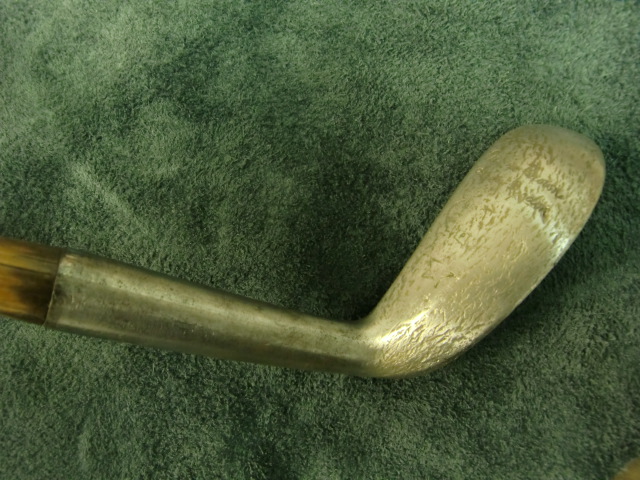  |
|
Beskrivning
|
Loft
|
Längd
|
Svingvikt |
Stämpel
|
|
Putter |
4° |
37 |
|
Brown-Vardon Putter |
|
Övrig
information |
William Gibson
Kinghorn
Another of the blacksmiths turned
cleekmakers and, again, one who served
his apprenticeship at the forge of James
Anderson in Anstruther. He started in
Edinburgh in 1887 as Stirling & Gibson
but, in 1899, Stirling died. The firm's
name changed to William Gibson & Co and
moved to Kinghorn in 1903.
By 1905 he had moved from just cleek
making to club production. His best
known was probably the Genii irons with
offset head and gooseneck hosel. The
idea came from one of his staff, Hugh
Logan who, for all his talents, never
established a clubmaking firm of his
own. Logan moved from firm to firm, even
becoming a sales rep for golf balls at
one point, becoming manager at F A
Johnston in London, an enterprise which
collapsed within a year.
He eventually became the world's largest
producer of golf clubs and his work can
be recognised by the cleek mark of a
five-pointed star.
|
|
 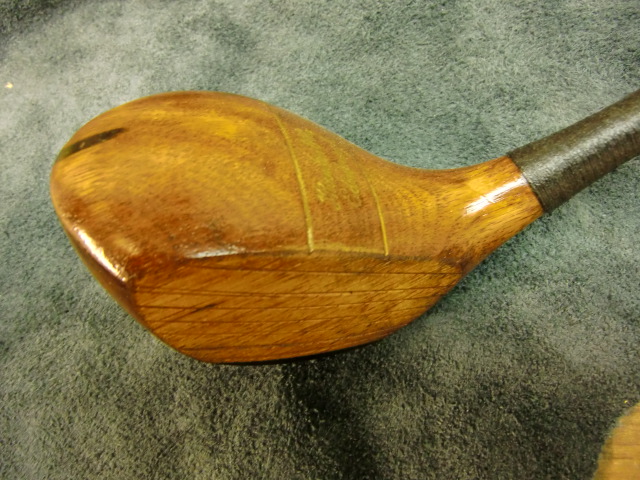
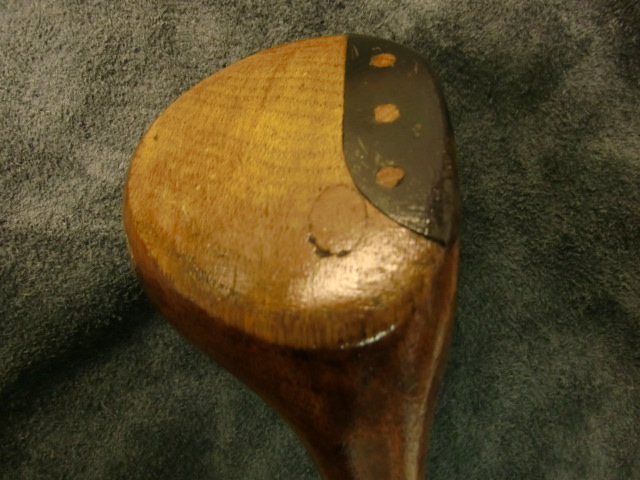 |
|
Beskrivning
|
Loft
|
Längd
|
Svingvikt |
Stämpel
|
|
Driver |
13° |
" |
C9 |
Thornton & Co
Edinburogh |
|
Övrig
information |
Thornton and
Company
Edinburgh /
Glasgow
Edinburgh and Glasgow sports retailers,
with branches in other towns also. Clubs
from their "Wonder" series are probably
the most commonly seen. |
|
|
|
|
|
|
|
|
|
|
|
|
|
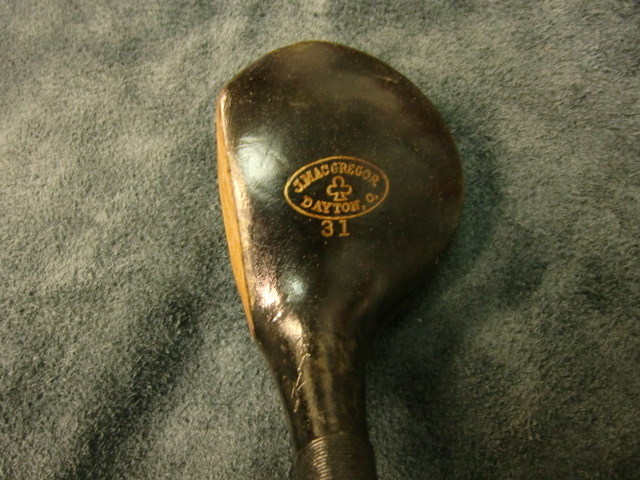 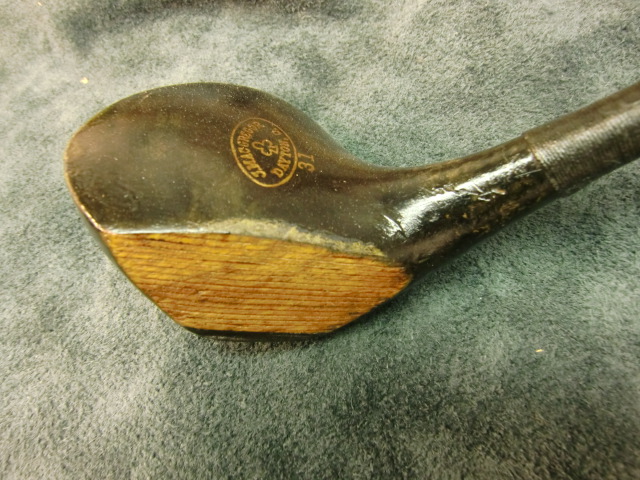
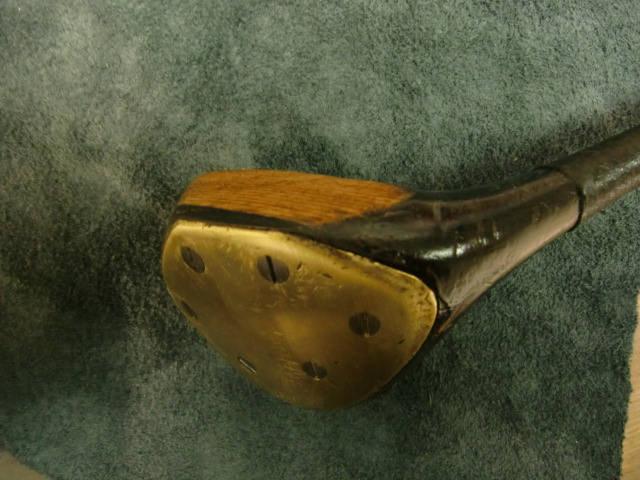 |
|
Beskrivning
|
Loft
|
Längd
|
Svingvikt |
Stämpel
|
|
Brassie-Bulldog |
18° |
" |
|
J.MACGREGOR DAYTON |
|
Övrig
information |
|
|
|
| |
| |
| |
|
|
|
|
